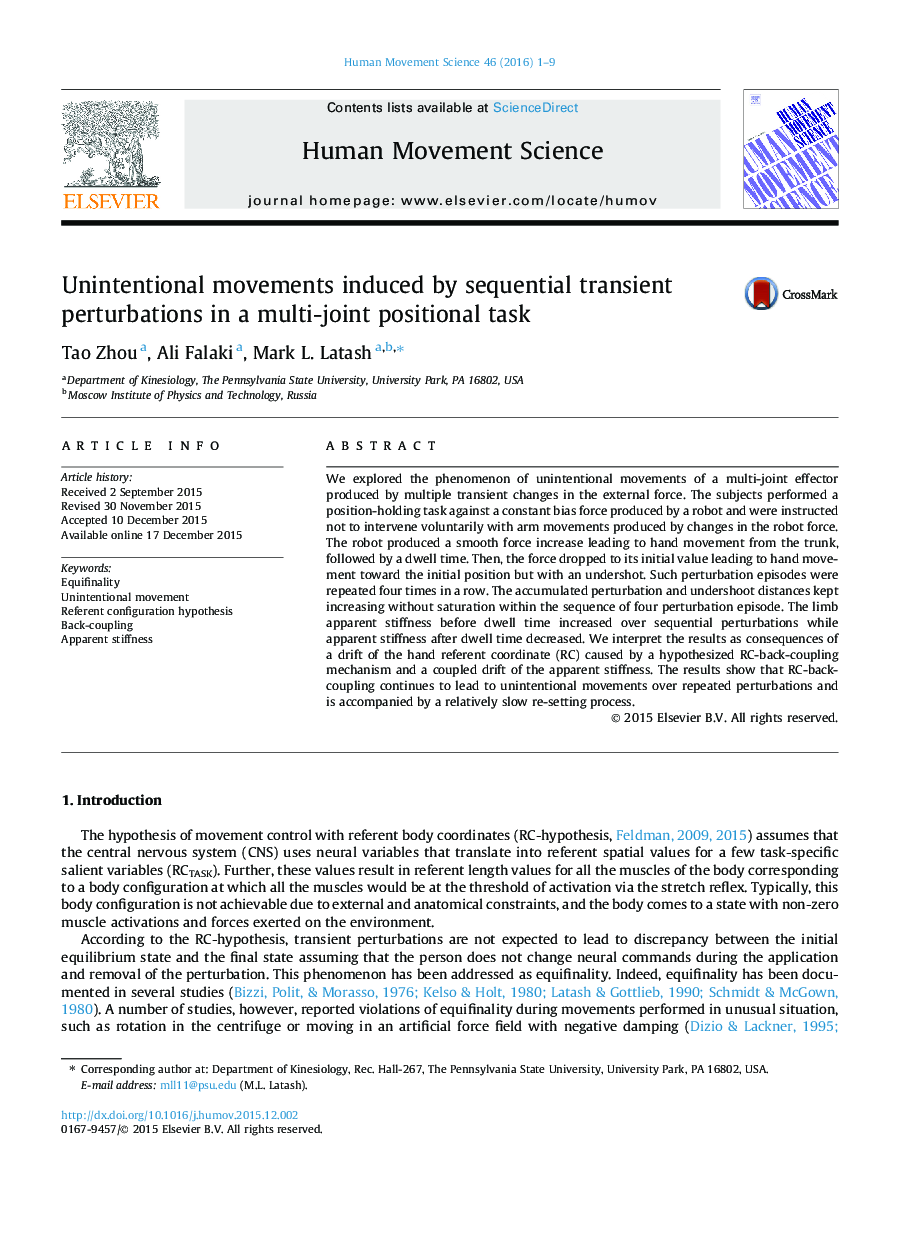| Article ID | Journal | Published Year | Pages | File Type |
|---|---|---|---|---|
| 928200 | Human Movement Science | 2016 | 9 Pages |
•Transient perturbations with dwell time lead to violations of equifinality.•Sequential transient perturbations lead to accumulation of the effects.•There are parallel changes in the arm apparent stiffness during dwell time.•Unintentional drift of hand referent coordinate is the likely mechanism of these effects.•There is a slower process of re-setting referent coordinate after the perturbation.
We explored the phenomenon of unintentional movements of a multi-joint effector produced by multiple transient changes in the external force. The subjects performed a position-holding task against a constant bias force produced by a robot and were instructed not to intervene voluntarily with arm movements produced by changes in the robot force. The robot produced a smooth force increase leading to hand movement from the trunk, followed by a dwell time. Then, the force dropped to its initial value leading to hand movement toward the initial position but with an undershot. Such perturbation episodes were repeated four times in a row. The accumulated perturbation and undershoot distances kept increasing without saturation within the sequence of four perturbation episode. The limb apparent stiffness before dwell time increased over sequential perturbations while apparent stiffness after dwell time decreased. We interpret the results as consequences of a drift of the hand referent coordinate (RC) caused by a hypothesized RC-back-coupling mechanism and a coupled drift of the apparent stiffness. The results show that RC-back-coupling continues to lead to unintentional movements over repeated perturbations and is accompanied by a relatively slow re-setting process.
